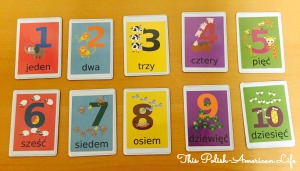It is often assumed that raising your child to be bilingual is the responsibility of the parent whose native language is being taught. Although majority of the work does fall on the bilingual parent, the role of the monolingual parent cannot be overlooked. Just like with any undertaking, raising your child to be bilingual is a team effort.
My husband’s Polish is limited to what he has learned since our son was born. However, he takes steps to be an active part of my son’s Polish acquisition, all while being patient and understanding, and having a positive attitude.
Here are four ways monolingual parents can be proactive in their child’s language acquisition:
- Try to learn the language. My husband has made an effort to learn more Polish words. Whether it is through daily “Polish Word of the Day” emails or attempting to read Polish language flashcards with my son, his actions show me and my son that he cares and is serious about us being a bilingual family. Most importantly, he uses the few Polish words that he knows when speaking to our son. Whether he is asking for a buzi (kiss) each morning before leaving to work, or saying prosze (here you go) when handing our son his food, he is helping reinforce already-learned vocabulary and make it a natural part of our family life. Husband tip: Learn to ask, “what is this?” It gets your child thinking and talking and is a great cover up for when you don’t know the word for a specific object. And if that doesn’t play out well, know how to ask “where is mama?”
- Use language materials with your child. My husband will watch Polish children’s programming and play children’s Polish language learning apps with our son. He will also play Polish music in the background as my son plays. He does this both when I am and am not present. This increase my son’s exposure to Polish (especially when I am not around), and makes the presence of the Polish language once again a normal part of our family life.
- Encourage bilingualism. Encourage your child to use the language, even if they revert to the majority language. As they get older, some children may refuse to speak the minority language. Encouragement from the monolingual parent can sometimes be a greater motivator for the child than from the bilingual parent (who can be seen as expecting the child to be bilingual). Become their student and let them teach you new words/phrases; young children especially like playing the role of a teacher. Make bilingualism a source of pride. Tell them how cool and special they are for knowing how to speak not one but two (or three, etc.) languages. Praise their efforts and accomplishments. My son beams when he can repeat a newly-learned word. Let your child hear you tell other adults how proud you are to raise him bilingual. Also, make your children aware of the benefits of being bilingual.
- Support your bilingual spouse. Raising your kids to be bilingual is a feat, especially when your child has very limited exposure to the language outside of your bilingual spouse. Your bilingual spouse may feel frustrated, inadequate, or like a failure at times. Strongly encourage your spouse to not give up.

